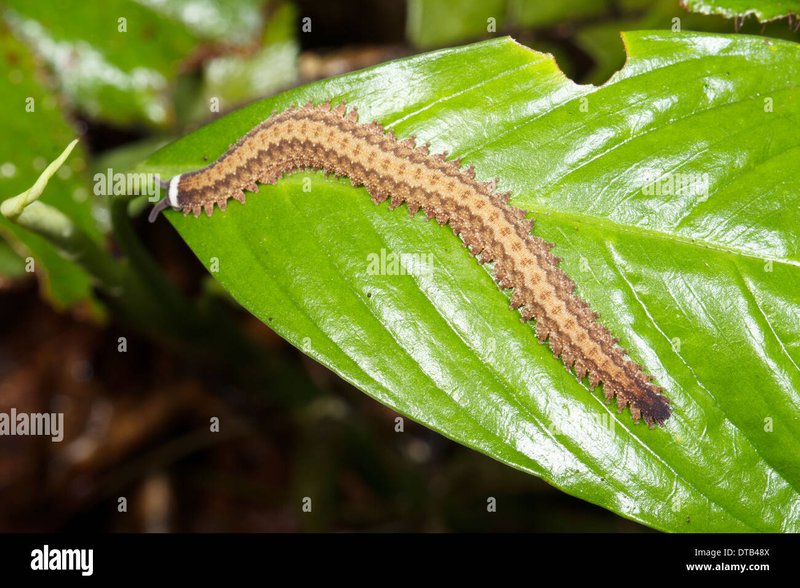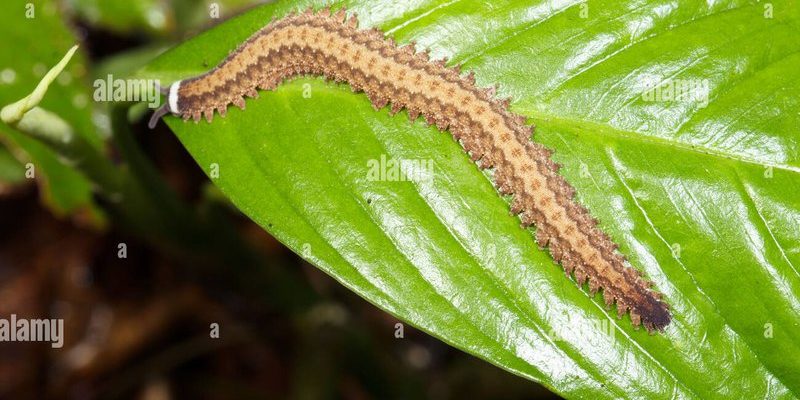
Imagine velvet worms as the slow-moving snacks of the rainforest ecosystem. These creatures thrive in humid environments, often found in leaf litter where they blend into their surroundings. However, they aren’t without their challenges. Predators like birds, reptiles, and even some insects have developed a taste for this peculiar worm. So, let’s dive into the intricate balance of the rainforest and explore the natural predators of velvet worms.
Understanding Velvet Worms
Velvet worms, scientifically known as *Onychophora*, have been around for millions of years, and they play a key role in their ecosystems. They tend to live in leaf litter, where they can remain hidden from both predators and human eyes. These creatures have a unique appearance: think of a caterpillar, but softer and more textured. Their bodies are covered in a soft, velvety layer that helps them retain moisture in their often humid environments.
What makes velvet worms particularly interesting is their hunting method. They’re not swift predators themselves; instead, they use a spray of slime to immobilize their prey. This slime acts like a glue, sticking to insects and other small animals, making it easier for velvet worms to trap them. But despite their interesting adaptations, they are not at the top of the food chain. In fact, their unique lifestyle makes them prime targets for a range of predators that call the rainforest home.
Birds: The Feathered Predators
Birds are some of the most common predators of velvet worms. Many avian species, especially those that forage on the forest floor, have developed a taste for these soft-bodied creatures. Think about it: birds like the *Black-crowned Antshrike* or the *Rufous-collared Sparrow* are naturally curious and explore the underbrush for food. Their sharp eyesight allows them to spot the heavily camouflaged velvet worms hiding among the leaves.
Once a bird spots a velvet worm, it’s often a quick meal. The worm’s sluggish movement and tendency to stay hidden in leaf litter make it an easy target. Birds can snatch them up in a flash, showcasing the harsh realities of life in the rainforest. This predatory relationship is a classic example of nature’s circle of life, where some creatures thrive by consuming others.
Reptiles: Silent Stalkers
In addition to birds, various reptiles also prey on velvet worms. Small lizards and snakes that roam the forest floor often hunt these worms. The *Green Tree Python* might not be the first creature that comes to mind, but it will hunt for small game like velvet worms, especially when they are hidden under leaves and debris.
These reptiles are well-adapted to their environments, often relying on stealth and quick strikes. Their ability to remain motionless as they wait for the right moment to strike gives them a distinct advantage over their prey. For velvet worms, it’s just another reminder of how quickly life can change in the wild.
Insects: The Tiny Tyrants
Insects, often overlooked, are surprisingly effective predators of velvet worms. Ants are among the most formidable foes. Some ant species specialize in raiding the nests of velvet worms, dragging them back to their colonies. Imagine a tiny army of ants working together, pulling a velvet worm in different directions—it’s a brutal sight but a fascinating display of teamwork.
Other insects, like certain types of wasps, have also been known to prey upon velvet worms. The lifecycle of these predators often intertwines with that of their prey, creating a complex web of interactions that can be both fascinating and brutal. For velvet worms, this means always being on high alert, even in their comfortable, leaf-filled homes.
Environmental Factors Influencing Predation
The rainforest ecosystem is incredibly dynamic, with various factors influencing predator-prey relationships. Humidity, temperature, and seasonal changes can all affect velvet worm populations and their predators. For instance, during particularly dry spells, velvet worms may find it challenging to thrive, making them more vulnerable to predation.
Moreover, the availability of food sources for predators can also impact how frequently velvet worms are hunted. If insects or smaller animals are plentiful, predators might be less likely to target velvet worms, offering these worms a temporary reprieve. However, when food is scarce, velvet worms become attractive targets, reminding us how the balance of nature can shift dramatically.
Adaptations of Velvet Worms Against Predators
To survive in a world filled with threats, velvet worms have developed fascinating adaptations. Their *soft, velvety skin* not only helps retain moisture but also allows them to blend into their surroundings. When a predator approaches, many velvet worms can also remain motionless, relying on their camouflage to avoid detection.
Additionally, the slime they produce serves as more than just a hunting tool; it can also act as a defense mechanism. If threatened, a velvet worm can emit a sticky substance that may deter some predators or slow them down long enough for the worm to escape. These adaptations are critical for their survival, showcasing how evolution crafts strategies to cope with the challenges of the rainforest.
The Balance of Rainforest Ecosystems
The interactions between velvet worms and their predators highlight a crucial aspect of rainforest ecosystems: balance. Each creature, big or small, plays a role in maintaining the health of their environment. Velvet worms contribute to the nutrient cycle as they consume organic matter and provide a food source for various predators.
A healthy population of velvet worms can indicate a thriving ecosystem, while fluctuations in their numbers can signal shifts in environmental conditions. It’s a reminder that every creature, even those that seem insignificant, has its part to play in the grand tapestry of life in the rainforest.
In the intricate dance of life within the rainforest, velvet worms hold a unique position, both as prey and as valuable contributors to their ecosystem. Their natural predators, from birds and reptiles to insects, are all part of a larger story that emphasizes the interconnectedness of life. By understanding these relationships, we gain insight into the delicate balance that sustains the rich biodiversity of rainforests.
So the next time you think about the rainforest, remember the velvet worm and its many predators. Each one plays a role in this vibrant, living tapestry, reminding us that every creature, no matter how small, has its place in nature.

